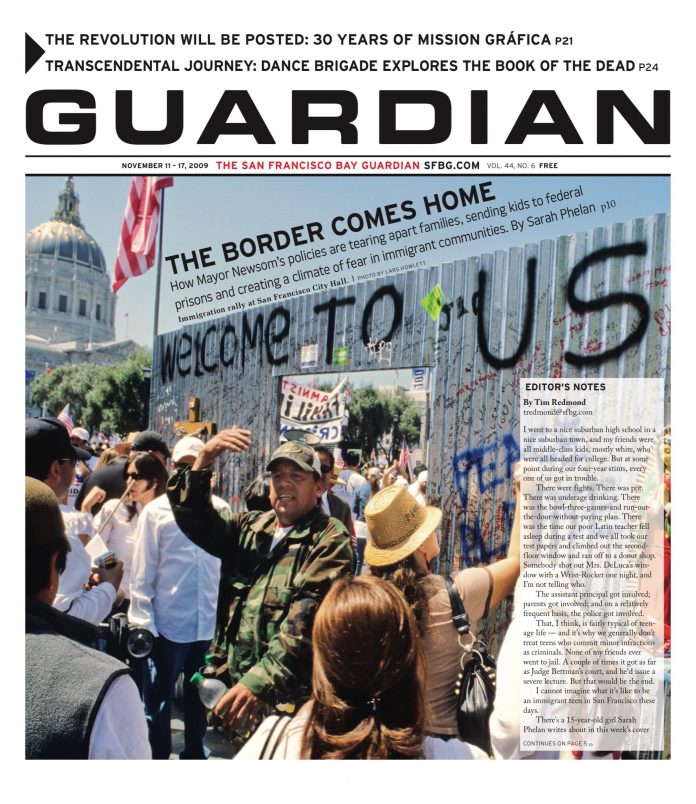EDITORIAL Mayor Gavin Newsom, reeling from criticism of his disappearing act last week and his failure to quickly reengage with San Francisco, has an opportunity to repair some of his tattered image, particularly among progressives, and mend fences with the majority of the Board of Supervisors. It wouldn’t even require a dramatic or groundbreaking step — all he has to do is agree to sign legislation by Sup. John Avalos extending eviction protections to roughly 20,000 vulnerable San Francisco renters.
The Avalos legislation clears up a lingering loophole in the city’s rent-control ordinance, a leftover piece of a bad deal that tenants were forced to accept when the city first moved to limit rent hikes 20 years ago. Back in 1978, with greedy landlords taking advantage of a housing shortage to jack up rents by astronomical rates, the supervisors and then-Mayor Dianne Feinstein were under immense pressure to pass some kind of control. But the landlord-friendly mayor and at-large elected board were unwilling to do what Berkeley had done across the bay by setting permanent limits on how much landlords could raise prices. Instead, they approved a watered-down measure aimed largely at fending off a tenant initiative that would have gone further.
The deal capped rent hikes — but only for existing tenants, allowing landlords to raise rents whenever a unit became vacant. And, after the real estate industry whined that rent control would cause developers to stop building new housing in San Francisco (a dubious claim if ever there was one), the supervisors agreed to exempt all newly constructed housing (that is, anything built after 1979) from any rent regulations at all.
That housing is still exempt from rent control — and because the rent control law also includes eviction protections for tenants, the post-1979 housing stock is also exempt from those rules.
Most San Francisco tenants enjoy what’s known as "just-cause" eviction rules — that is, you can’t toss a tenant out on the streets without a reason. Failure to pay rent, of course, is legal grounds to send someone packing; it’s also okay to force a tenant out if the owner wants to move in.
But for the roughly 20,000 renters living in newer units, evictions can happen on a landlord’s whim — and one of the most dangerous problems is the lack of protection for people who live in a foreclosed building. Tenants in older, pre-1979 buildings have the right to continue to live in the property, under the same lease or rental agreement, after a sale or foreclosure. The Avalos bill would extend that protection (and the other just-cause protections) to all tenants in the city.
It’s hardly a radical idea — and given the boom in high-end housing construction in this city over the past decade (slowed only by the economic crash), the claim that tenant protections will doom new housing is demonstrably false. It would save vulnerable residents from losing their homes, protect people who live (through no fault of their own) in foreclosed properties, and restore a level of fairness to the local housing market.
The measure will almost certainly get six votes on the board, so the only real obstacle is the threat of a Newsom veto. The mayor should state publicly that he supports the measure and will sign it — which could be the start of a new, more promising chapter in Newsom’s political career.

